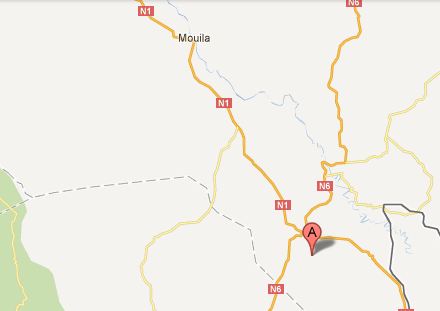We have a young pair of Aphyosemion primagenium. They live in a 10 gallon tank of aged, softened peat water. The tank has tight lid, a gravel box filter and two mops.
The male is above. He is very shy and rarely swims in the front of the tank. Here he has seen me and his red dots have faded, but he is very bright when courting the female. The female is very tame, and hangs out in the front of the tank much of the time.
Currently we are raising several cohorts of young, totaling 33 juveniles, and have several dishes of viable eggs. I'm getting overwhelmed with A. primagenium and have slowed egg collection. The parents don't bother their young.
When the fry hatch out we keep them in labeled pyrex bowls, about 4" diameter x 1.6" deep, with a few sprigs of Java Moss. Each plant has been visually checked with a magnifier to make sure there are no mature Hydra on them. Snails are also not included in the fry bowls.The bowls are checked each day, and half the water is changed with a turkey baster. Removed water is put into a plastic dish to be sure no fry are removed with the water.
If young Hydra are seen the water is dumped into a clean labeled bowl. The hydra stay behind, attached to the glass of the old bowl. The old bowl is cleaned with scalding hot water, then wiped with a new paper towel. That's the end of the Hydra.
The A. primagenium fry can eat freshly hatched brine shrimp immediately, and they grow fast.
Aphyosemion primagenium is considered "Vulnerable" on the IUCN redlist, here:
http://www.iucnredlist.org/apps/redlist/details/181645/0. Vulnerable is the next level below endangered.
The IUCN reviewers write:
"Aphyosemion (Mesoaphyosemion) primigenium is known from maximum five localities from between Mouila and Bdede-Lebamba [Lebamba] in the Ngounie and Nyanga Rivers in southwestern Gabon."
Above is the Ngounie River, a tributary of the Ogooué River, as it flows past Mouila.
Above you see the Ngounie mapped from Mouila toward Labamba, and A. primagenium also extends into the Nyanga watershed, shown here at balloon "A". The river runs about 90km between the two towns, which are about 50 miles apart as the crow flies. The trip from Mouila down N1, then northeast to Labamba, is 114 km long.
Here the two towns are shown in Google Earth. Note the scale.




No comments:
Post a Comment